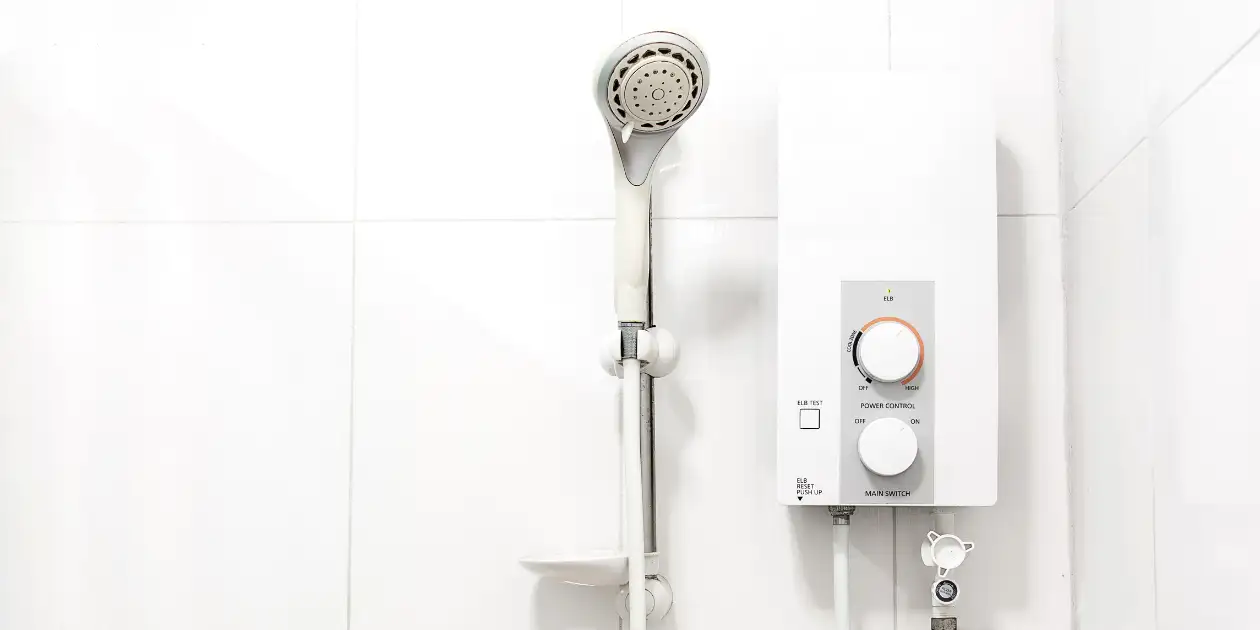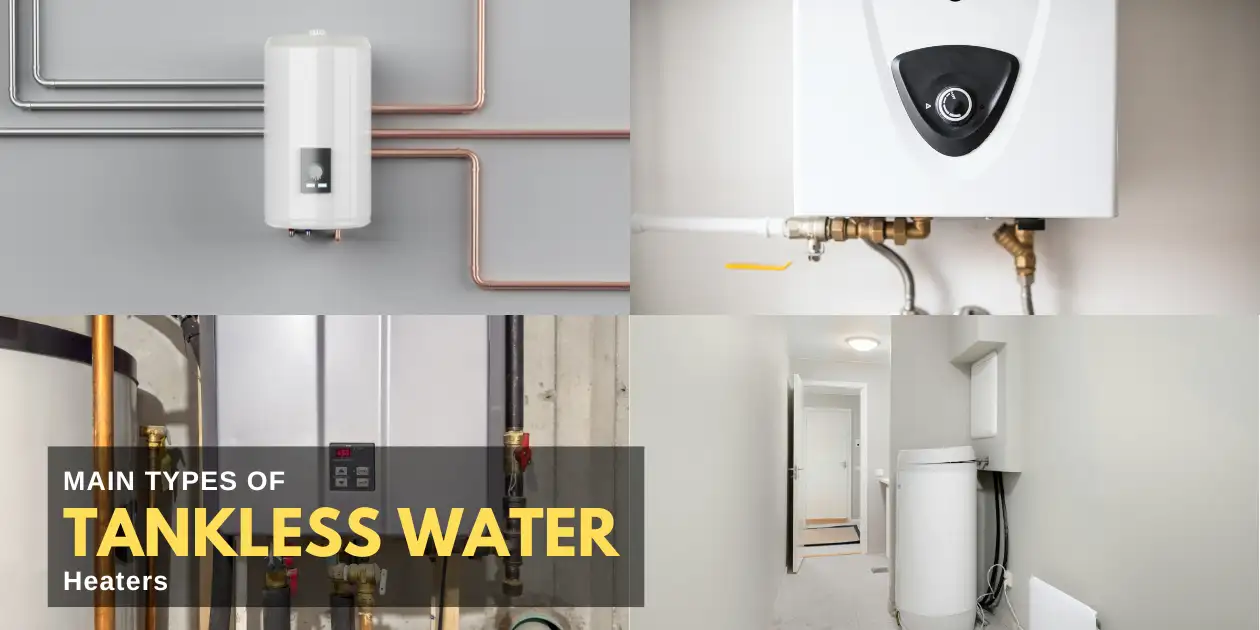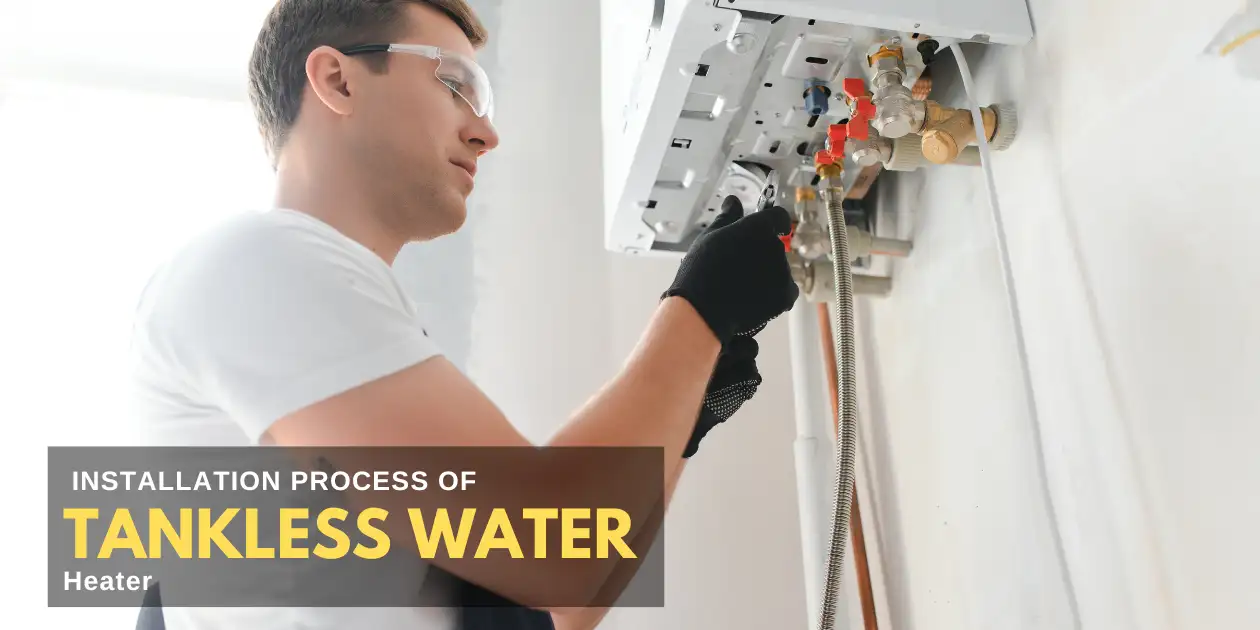The traditional heated water tank was a common appliance in the homes of a long time but tankless water heaters are growing in popularity as people seek out more efficient and practical options to save space. In contrast to traditional water heaters, which constantly heat and store up to 80-90 gallons in liquids, tanksless models can provide hot water in the time that you require it, and supply warm water when and only when they want the need for it. This fundamental guide provides a wealth of benefits and drawbacks homeowners should consider prior to making a decision about switching.
As the cost of energy continues to rise and environmental concerns grow, many homeowners are considering alternatives to heat their water. Tankless water heaters can provide unlimited hot water, a decrease in energy usage, and smaller footprints, but can they live up to their claims? This complete guide will assist you in understanding the details about tankless water heaters. It will also explore their advantages, drawbacks, and the installation requirements and long-term advantages to assist you in making an informed decision for your home.
What Are Tankless Water Heaters?

Tankless water heaters are commonly referred to as instantaneous or even on demand water heaters are based on a concept that heats water as it moves through the system, eliminating the need of tank storage. When you turn on a hot water faucet, cold water will be transferred through a pipe into the unit, and then it is heated by electric or gas heating element. This will allow for continuous stream of warm water and eliminates the energy loss that is associated from standby heating elements for the water.
- Activation: When you switch to the hot water tap then cold water are pumped through the unit and enters there.
- Flow detector: The detector is able to detect the movement of water. Then it activates its heating element.
- Heating Exchange: The water is circulated through an heater that is swiftly warm to a specific temperature determined.
- Deliver: The hot water is directly delivered to your faucet or appliance.
- Deactivation: If you shut off your hot water, the unit will shut off automatically.
Main Types of Tankless Water Heaters

1. Gas Powered Tankless Water Heaters
Gas powered tankless water heating systems models use natural gas or propane for heating water. They typically have higher capacity that electric ones, which makes them suitable for larger houses. These models require venting to be properly installed as well as gas line installation however, they are generally less expensive to run than electric models.
2. Electric Tankless Water Heaters
The electric units are less bulky and easier to install as compared to gasoline units. There is no requirement for venting, however they could require an upgrade to the electrical system to accommodate their power needs. They are suitable for smaller homes or applications that are at a point of use when the requirement is not too great.
3. Point of Use Tankless Water Heaters
These little units are installed near specific fixtures (like showers and kitchen sinks) and provide warm water only to that fixture that they are placed in. They’re great for adding a boost to the water heater that is in remote areas of your home where hot water may take some duration to get there.
4. Whole House Tankless Water Heaters
This heater is created to provide hot water to multiple fixtures at once, these larger units can meet the requirements of a family. They need an appropriate sizing that is based on the maximum amount of hot water in order to make sure that they perform as intended.
Pros of Tankless Water Heaters
- Energy Efficiency: Tankless heaters can be 24 to 34% more efficient in energy use than traditional storage models for homes that use just 41 gallons of hot water a every day.
- Endless Hot Water Supply: The most appealing benefit tanks that are tankless have is the ability to continually provide hot water. For as long as you stay within the limits of the tank, you aren’t capable of getting hot water ever again. Y
- Space Saving Design: Tankless tanks are tiny they generally are about is the size of a suitcase are, and can be positioned in wall.
- Longer Lifespan: Regular maintenance is required., Tankless water heaters typically last for a period of 20+ years This is more than double the duration of standard tank models (10-15 years).
- Reduced Risk of Water Damage: Without a tank that can leak or break, tanks can completely eliminate the possibility of water damage occurring in the extreme, which could happen in traditional hot water heating.
- Lower Long Term Operating Costs: Despite the greater initial costs, tankless water heaters generally last longer due to energy savings and a longer period of use. Based on your routines with hot water usage and local utility rates and patterns of usage You can save hundreds of dollars a every year from your electricity costs.
Cons of Tankless Water Heaters
- Higher Initial Cost: The biggest drawback of tanks-free models is their price at first. In addition to the cost of purchase and installation by professionals typically cost 2,000-4500, compared to 700-2,000 for traditional tanks. The cost of the initial investment could be a challenge for those with a tight budget.
- Limited Flow Rate: Tankless heaters have flow restrictions, which may be apparent when several hot water heaters are used simultaneously.
- Installation Complexity and Additional Costs: A tankless system typically will require major changes to the current infrastructure of your house:
- More Pipelines: Gas models may require more pipelines to handle their larger BTU needs.
- Venting System: Venting system that is properly designed have to be installed for gas appliances.
- Water Softeners: This might be required in areas with hard water in order to prevent the build up of scale
- Potential “Cold Water Sandwich” Effect: Some users report experiencing a brief burst of cold water after repeated usages, which is which is known by”the “cold water sandwich” effect.
- Longer Wait Times for Hot Water: Water heaters that are tankless can create more difficulties for water’s temperature to get to fixtures further from the tank than tanks.
Cost Analysis Tankless in comparison to Traditional Water Heaters
1. Initial Investment
| Water Heater Type | Unit Cost | Professional Installation | Potential Upgrades | Total Initial Investment |
|---|---|---|---|---|
| Tankless Water Heater | $1,000 – $3,000 | $1,000 – $1,500 | $500 – $1,000 (gas lines, venting, electrical) | $2,000 – $4,500 |
| Traditional Tank Water Heater | $300 – $1,300 | $400 – $1,000 | N/A | $700 – $2,000 |
2. Operating Costs
| Water Heater Type | Annual Energy Cost | Maintenance (per year) | Expected Life Expectancy | Total Lifetime Operating Cost |
|---|---|---|---|---|
| Tankless Water Heater | $175 – $300 | $100 – $200 | 20+ years | $5,500 – $10,000 |
| Traditional Tank Water Heater | $300 – $500 | $50 – $100 | 10 – 15 years | $3,500 – $9,000 |
3. Return on Investment
Tanks that do not require plumbing might cost more initially but their less energy use and longer lifespan typically will lead to breaking even after a period of 8-10 years. Homeowners who are planning to stay for the duration of their lives in their home typically receive the most financial benefit from tanks that aren’t closed.
4. Sizing Your Tankless Water Heater
An effective sizing procedure is crucial in tankless models’ efficiency. Contrary to tanks, whose dimensions can be determined by the gallons, models for tankless are sized according to the flow rate (GPM) and the capacity to increase temperature.
5. Determining Your Flow Rate Needs
- Look for fixtures operating simultaneously
- Mix their flows:
- Shower: 1.5-2.5 GPM
- Bathroom faucets: 0.5-1.5 GPM
- Kitchen faucet: 1.0-2.0 GPM
- Dishwasher: 1.0-2.5 GPM
- Washing machine: 1.5-3.0 GPM
6. Calculating Temperature Rise Requirements
Temperature rise represents the temperature that is desired for output the temperature of water that is coming to the tank. For example for instance, if the temperature of your groundwater at 50°C and you require 120°F water, you’ll need the right system that can supply 70°F of temperature rise in accordance with what flow rates you desire.
7. Climate Considerations
Colder regions need units that have greater heating capability because the temperature of the water at the beginning may be lower and requires more effort to reach the desired temperature. The unit that is perfect in Florida is not suitable for Minnesota.
Step by Step Installation Process

While an expert installation is highly recommended understanding how it functions will help you make an educated decision:
- Switch off the Utilities: By shutting off the water, gas or electric to the location that you will be installing.
- Remove Old Unit: If replacing an older model of water heater, be sure that you disconnect it first before removing it.
- Create an Appropriate Mounting Point: The bracket should be fixed to a wall that can support the device
- Installing the System for Venting: For gas appliances ensure that you install the proper venting system that is in accordance to the specifications that are provided by the company.
- Connecting Water Lines: Connecting water lines to water filtration in the event that it is required, connect hot and cold output water lines.
- Connect gas or electric: Connect to the gas line by using the correct size. For electric devices, connect the appropriate circuit breaker.
- Install an emergency Pressure relief valve: This security feature safeguards against the dangers of pressure build-up
- Verify the Operation: Check for leaks, a correct ignition, and a consistent temperature
Professional vs. Do it yourself Installation
Although a handful of experienced DIYers could tackle the installation of an electric tankless gas models are more complicated due to venting requirements and gas line installations that typically necessitate the skills of a skilled professional. Many manufacturers require a professional installation order to maintain warranty in place. The price for professional installation (1,000-1,500) includes the proper sizes, code compliance, and optimization of the system.
Common Problems and Troubleshooting
1. No Hot Water
Possible causes of not getting hot water are:
- Gas supply interruption, or power outage
- The flow of water is not enough for the unit to be turned on.
- Mineral buildup restricting flow
- System overload due to excessive demand
2. Temperature Fluctuations
Possible causes of getting temperature up’s and down are:
- Incorrect sizing for simultaneous use
- Mineral buildup affecting sensors
- Crossflows in hot and cold lines of water
- Malfunctioning mixing valve
3. System Shutdowns
Possible causes of system turning from on to off are:
- Venting blockage (gas units)
- Protection against overheating is activated
- The overload of circuits electrical (electric units)
- Water pressure irregularities
Environmental Impact and Energy Efficiency
1. Energy Consumption Comparison
Tankless heaters reduce the use of energy by eliminating the standby loss. A average family of four can save between 27 and 70% of heating costs for water when compared to conventional tank tanks. This is equivalent to between 1,000 and 1,500 kWh electricity or 50 to 80 trillion thermometers of gas natural gas every year.
2. Carbon Footprint Reduction
The savings in energy which result with tankless models can translate directly into less CO2 emissions. Over the period of time, the tankless model can cut down emissions from a home by as much as 1 to 2 tons of CO2 compared to conventional tank models.
3. Water Conservation Benefits
Although they don’t have a primary purpose, tanksless water heaters could assist in reducing water consumption. Eliminating this “waiting for hot water” moment that occurs as tanks cool down can aid in reducing the amount of water needed every year in homes.
Conclusion
Tankless water heaters are an a significant improvement in water heating technology offering significant benefits in terms of energy efficiency, space-savings as well as long-term durability. But they’re not the best option for every household. The greater initial cost and the potential for installation issues and flow rate limitations must be taken into consideration with caution. For homes that have a moderate demands for hot water and enough funds for the initial costs and plans to stay in their residences in the future, tankless water heaters can be a wise investment.
They are effective and reliable hot water and energy efficient, reducing consumption and environmental impact. Before you make a choice, consult with a professional who will evaluate your individual requirements, the structure of your house and the usage the most appropriate patterns. With the right installation, sizing, and routine maintenance, tanksless water heaters will give you up to a decade of efficient and reliable service which makes it a great option to meet your water heating needs.
FAQs
How much can I expect to reduce my energy bills with a tankless water heater?
Most households can save between 24% to 34% on water heating costs, which equals $100–$200 annually, depending on usage patterns and local utility rates.
Does a tankless water heater work during a power outage?
Gas-powered tankless models require electricity for electronic controls and will not operate during a power outage unless you have a backup generator.
Can I install a tankless water heater myself?
Point-of-use models may be suitable for experienced DIYers, but whole-house systems especially gas units should be installed by a professional to ensure safety and maintain the warranty.
How long does it take to recoup the higher cost of a tankless water heater?
Most homeowners reach the break-even point in 8 to 10 years, thanks to energy savings and the longer lifespan compared to traditional tank heaters.
Can tankless water heaters work in cold climates?
Yes, but they must be properly sized to handle colder incoming water temperatures. In very cold climates, you may need a larger or multiple units to meet your hot water needs.
Can a tankless water heater supply multiple showers at once?
It depends on the unit’s capacity and the temperature of incoming water. A properly sized gas tankless heater can usually handle two showers at once, while electric models may handle one or two fixtures simultaneously.
How often should a tankless water heater be serviced?
Cleaning the filter and descaling annually is recommended, especially in areas with hard water. An annual inspection by a professional ensures optimal performance and safety.
